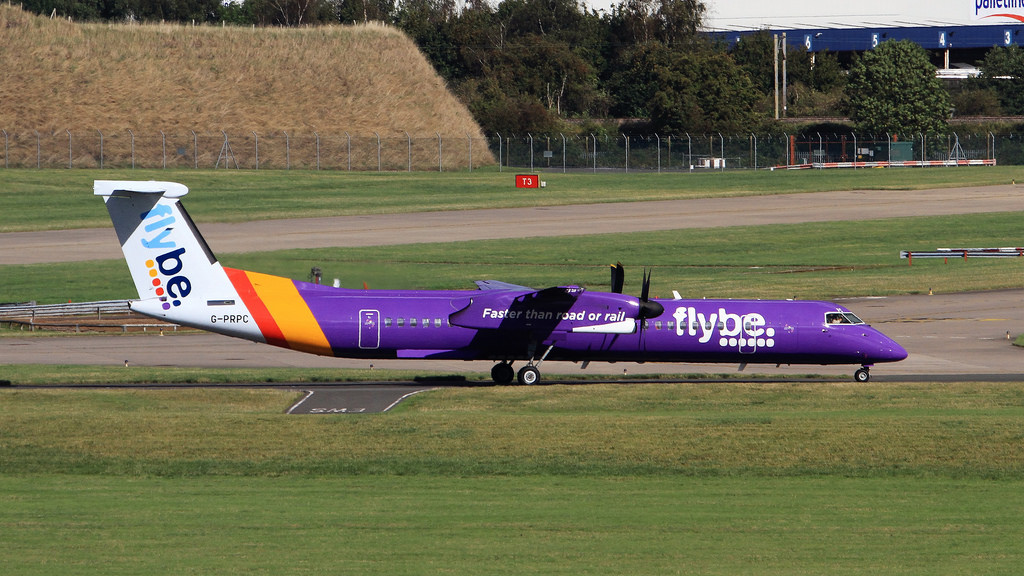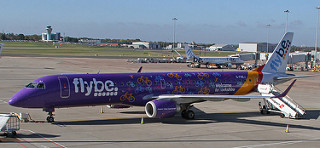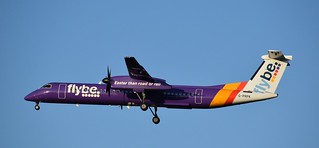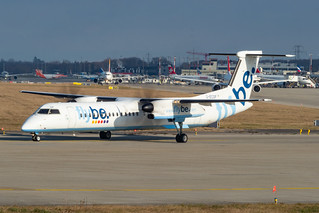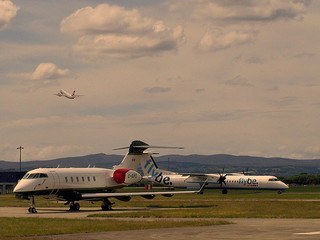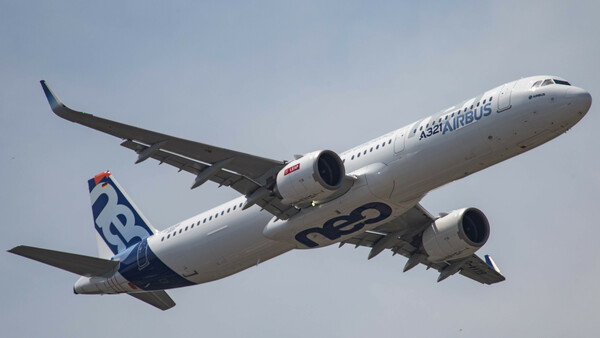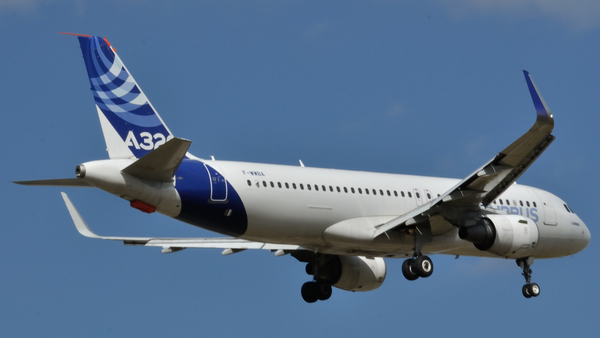Flybe DH8D at Manchester on Dec 14th 2016, dropped engine cowl
Last Update: September 14, 2017 / 14:42:53 GMT/Zulu time
Incident Facts
Date of incident
Dec 14, 2016
Classification
Accident
Airline
Flybe
Flight number
BE-7301
Departure
Manchester, United Kingdom
Destination
Hanover, Germany
Aircraft Registration
G-PRPC
Aircraft Type
De Havilland Dash 8 (400)
ICAO Type Designator
DH8D
Germany's BFU reported in their December Bulletin, that the loss of the engine cowl was detected only after landing in Hanover. The UK AAIB opened an investigation, the BFU is assisting the investigation into the occurrence rated an accident.
On Sep 14th 2017 the AAIB released their bulletin releasing following conclusions:
Following overnight maintenance work, the outboard engine main access panel on the No 1 engine was not securely closed by the engineer, due to the latch bolts not engaging in the nacelle receiving features when the latches were closed. Contributory factors may have been a slight mismatch in the closure of the panel and the technique used by the engineer of closing the top latches first. The resulting gap around the panel was not identified by the engineer completing the task, possibly as a consequence of the angle at which he was looking down on the closed panel and the lack of contrast of the shadow cast on the dark coloured engine nacelle.
The aircraft commander did not identify the incorrect closure of the panel during his subsequent pre-departure inspection, neither did the ground operations crew dispatching the aircraft. During the next takeoff, the panel failed at the hinge attachment points and departed the aircraft striking and damaging the vertical stabiliser, before coming to rest on the runway and its grass verge. The investigation identified a lack of consistency in the way flight crew were instructed on completing pre-departure inspections during their training.
A previous accident, where the same engine panel was lost during takeoff, had occurred on the aircraft a month earlier. The circumstances and investigation findings for both accidents were the same. Safety action has been taken by the aircraft manufacturer to add labelling and amend the AMM and the operator has revised its maintenance procedures. In addition, two Safety Recommendations have been made relating to flight crew pre-departure inspection procedures and dissemination of safety information to ground crew, with the intention of preventing recurrence.
The AAIB reported the aircraft overnighted at Manchester airport. During the night routine maintenance tasks were conducted including checking the oil content of the #1 engine, which required opening of the outboard main access panel.
The flight crew arriving the following morning performed the walk around in the dark, the captain used a torch for the walk around and did not identify any issues.
Ground crew also performing a walk around also did not note anything out of the ordinary.
The aircraft subsequently departed and performed a seemingly uneventful flight to Hanover. Only after arrival at the stand and disembarkation of all passengers ground crew informed cabin crew that a panel was missing from the #1 engine, the message was relayed to the flight crew, who inspected the aircraft before contacting the operator's maintenance department. The operator subsequently informed Manchester airport, who performed a runway inspection and recovered the panel from the grass side of the runway about 440 meters down the runway. Sections of the panel's hold open structure were recovered from the runway and adjacent paved areas.
Inspection of the aircraft identified puncture holes on both sides of the vertical stabilizer with impact marks also on the leading edge de-icing boot. Impact damage was also found on the VOR/LOC antennas.
The AAIB reported that a similiar occurrence had occurrend on Nov 9th 2016 to the same aircraft.
The AAIB analysed:
On two separate occasions the outboard engine access panel on the No 1 engine on G-PRPC detached during takeoff. In both cases, the inspections of the panels and aircraft following the event showed that the locking bolts on the panel latches and the bolt receiving features on the nacelle had not failed or been damaged. In addition, the latches on the panels were confirmed to have been fully closed when the panels were recovered. As such, in both events the only explanation for the panels departing the aircraft during takeoff was that the bolts had not engaged in the receivers on the nacelle when the latches were shut.
In this event, the aircraft sustained limited damage which did not compromise its ability to complete the flight safely. However, there is the potential for more serious damage to occur and the departure of such a large panel from the aircraft could also endanger people on the ground.
The engineers conducting the maintenance daily check prior to both incidents were experienced and well trained staff, who had safely completed the same task many times during the years preceding these incidents. They came from different companies, with separate training organisations and operated at different airports. No significant contributing factors were identified which differentiated these two incidents from any previous occasions that they had completed the same task successfully. The only apparent common links were the technique used to close the panel, the physical positioning of the engineer as this was done and the lighting conditions at the time.
The technique of closing the top latches first, when combined with an access panel which may not immediately fit into its correct position without additional adjustment, appears to have created the conditions for a sequence of events which allowed the engineer to close the latches believing that they had correctly engaged the locking bolts, when in reality this was not the case. The fact that the engineers were then looking down on the panel, which was predominantly illuminated by the beam from a head torch, meant that the main indication of the gap at the bottom of the panel was only visually identifiable by the shadow that was cast. As the surrounding panels were painted purple this may not have been obvious, particularly considering that the engineer was not expecting the panel to be open once the latches were closed, was not specifically checking for the presence of a shadow, and may not have appreciated the implication of the presence of a shadow in this position.
Incident Facts
Date of incident
Dec 14, 2016
Classification
Accident
Airline
Flybe
Flight number
BE-7301
Departure
Manchester, United Kingdom
Destination
Hanover, Germany
Aircraft Registration
G-PRPC
Aircraft Type
De Havilland Dash 8 (400)
ICAO Type Designator
DH8D
This article is published under license from Avherald.com. © of text by Avherald.com.
Article source
You can read 2 more free articles without a subscription.
Subscribe now and continue reading without any limits!
Read unlimited articles and receive our daily update briefing. Gain better insights into what is happening in commercial aviation safety.
Send tip
Support AeroInside by sending a small tip amount.
Related articles
Flybe DH8D enroute on Sep 21st 2018, loss of cabin pressure
A Flybe de Havilland Dash 8-400, registration G-PRPC performing flight BE-694 from Belfast City,NI to Edinburgh,SC (UK) with 70 passengers and 4…
Flybe DH8D at Newquay on Nov 14th 2019, aileron cable broke
A Flybe de Havilland Dash 8-400, registration G-FLBE performing flight BE-2187 from Newquay,EN to London Heathrow,EN (UK) with 59 passengers and 4…
Flybe E195 at Exeter on Feb 28th 2019, rejected takeoff due to haze on board as result of maintenannce prompts evacuation
A Flybe Embraer ERJ-195, registration G-FBEJ performing flight BE-4321 from Exeter,EN (UK) to Alicante,SP (Spain) with 100 passengers and 5 crew, had…
Flybe DH8D near BIrmingham on Jul 22nd 2019, cabin pressure problems
A Flybe de Havilland Dash 8-400, registration G-PRPK performing flight BE-1331 from Edinburgh,SC to London City,EN (UK) with 56 passenges and 4 crew,…
Flybe DH8D near Manchester on Nov 22nd 2019, engine shut down in flight
A Flybe de Havilland Dash 8-400, registration G-ECOF performing flight BE-774 from Southampton,EN to Edinburgh,SC (UK) with 69 people on board, was…
Flybe DH8D near Exeter on Nov 15th 2018, altitude disagree
A Flybe de Havilland Dash 8-400, registration G-JECR performing flight BE-3501 from Exeter,EN (UK) to Paris Charles de Gaulle (France), was enroute…
Newest articles
Wizz UK A21N at Prague on Sep 11th 2025, tail strike on landing
A Wizz Air UK Airbus A321-200N, registration G-XLRA performing flight W9-5775 from London Gatwick,EN (UK) to Prague (Czech Republic), landed on…
PIA A320 at Lahore on Jan 17th 2025, landed on wrong runway
A PIA Pakistan International Airlines Airbus A320-200, registration AP-BON performing flight PK-150 from Dammam (Saudi Arabia) to Multan (Pakistan)…
Subscribe today
Are you researching aviation incidents? Get access to AeroInside Insights, unlimited read access and receive the daily newsletter.
Pick your plan and subscribePartner

ELITE Simulation Solutions is a leading global provider of Flight Simulation Training Devices, IFR training software as well as flight controls and related services. Find out more.
SafetyScan Pro provides streamlined access to thousands of aviation accident reports. Tailored for your safety management efforts. Book your demo today
AeroInside Blog
Popular aircraft
Airbus A320Boeing 737-800
Boeing 737-800 MAX
Popular airlines
American AirlinesUnited
Delta
Air Canada
Lufthansa
British Airways

